Table of Contents
Imagine entering a world rich with history, culture, and stunning beauty—a place where ancient empires come alive from history books, merging with the vibrant energy of the present. This is Iran, a country ready to captivate you with its rich tapestry of experiences and hidden treasures. As 2025 is here, this is the perfect moment to immerse yourself in all the marvels this fascinating destination holds. For those planning their journey, this Iran travel guide will be an invaluable companion, offering insights and tips to enhance your adventure.
Despite any misconceptions, Iran is rapidly gaining recognition as a must-visit destination for world travelers seeking unique adventures. From the mesmerizing architecture of Isfahan to the otherworldly landscapes of Dasht-e Lut, each corner of this country tells a story of times gone by. As travel enthusiasts plan their next adventure, understanding the practicalities—like when to pack your bags, navigating local customs, and feeling secure—becomes an essential part of the voyage.
In this comprehensive Iran travel guide, we’ll delve into the country’s magnetic allure, equip you with insider tips on visas, safety, and local traditions, and unveil the vibrant tapestry of sites and experiences awaiting you. Whether you’re tantalized by the prospect of tasting authentic Persian cuisine or eager to wander through UNESCO World Heritage Sites, this guide is your passport to unlocking a truly transformative journey.
Why Iran Travel Should Be on Your Bucket List
Exploring Iran should undoubtedly be on every travel enthusiast’s bucket list. This nation, rich in culture and history, offers an unparalleled adventure with its fusion of ancient sites and vibrant, modern life. Imagine wandering through historical sites like Persepolis, where the echoes of ancient Persia still resonate, or getting lost in the chaotic charm of Tehran’s bustling bazaars.
Iran’s architectural marvels are a testament to human creativity and craftsmanship. From stunning mosques with intricate tile work to majestic palaces, each site tells a unique story of the nation’s past. The hospitality of the Iranian people further enriches this experience, offering warmth and friendliness at every turn.
Embrace the vibrant Persian culture through its music, dance, and festivals. To enhance your interactions, consider learning basic Persian phrases; locals truly appreciate it. While traveling, keep in mind that tipping has become expected, especially in fancy restaurants or for services like luggage assistance at airports.
Begin an adventure filled with unforgettable memories and unparalleled cultural immersion.
Best Time to Travel to Iran
Exploring Iran is a captivating journey through time, culture, and nature. The best times to visit are spring (March to May) and autumn (September to October) when the weather is charmingly temperate.
For a truly vibrant cultural experience, consider traveling around March 20/21 for Nowruz, the Persian New Year. Though it must be so busy and many roads and tourist spots are filled with domestic tourists, you will find the chance to experience some unique customs and traditions of the Persian New Year.
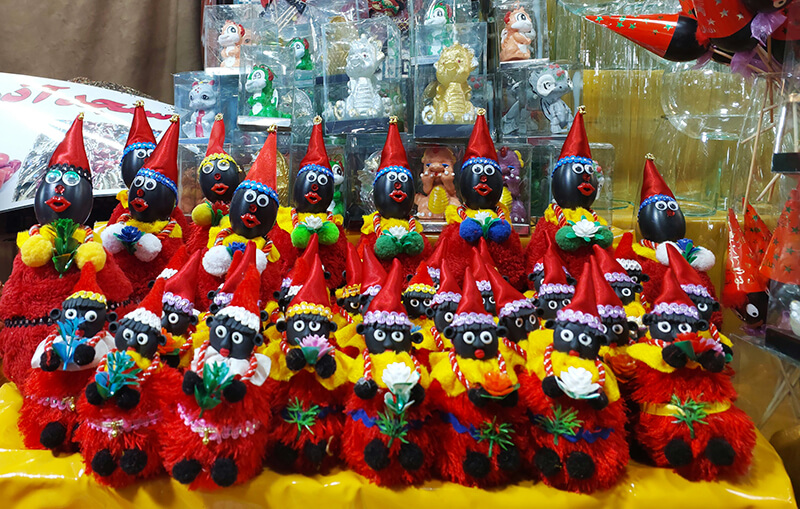
Each region has its peak period;
Southern Iran is delightful in winter, while the cooler climate of the north and northwest is perfect for summer adventures. Classic Persian cities like Esfahan, Yazd, and Shiraz offer their best during winter, spring, and autumn, avoiding the scorching summer heat.
If immersing in Persian culture piques your interest, plan your visit during Muharram for the Tasua and Ashura religious observances. That’s one of the most important carnivals of Shia Muslims in Iran.
With these insights, your trip to Iran will be enriched with cultural wonders and breathtaking scenery at the best times possible!
Is Iran Safe to Travel to?
Iran is often regarded as a safe destination for travelers, boasting a low crime rate compared to other Middle Eastern countries. Visitors to Iran frequently experience the renowned hospitality that is a cornerstone of Persian culture, embracing the warm and welcoming nature of its people.
While traveling, it is advisable to avoid discussing politics and refrain from photographing official buildings and military personnel, which could help avert potential misunderstandings. Though crime against tourists is rare, it’s wise to be vigilant against petty crimes, such as pickpocketing, particularly in bustling bazaars.
Despite the regional conflicts that may raise safety concerns, Iran remains a secure place for tourists. The combination of hospitable people and vibrant culture makes Iran an inviting destination. Here are a few safety tips:
- Be cautious in crowded areas.
- Keep your belongings secure.
- Respect local customs and be mindful of cultural sensitivities.
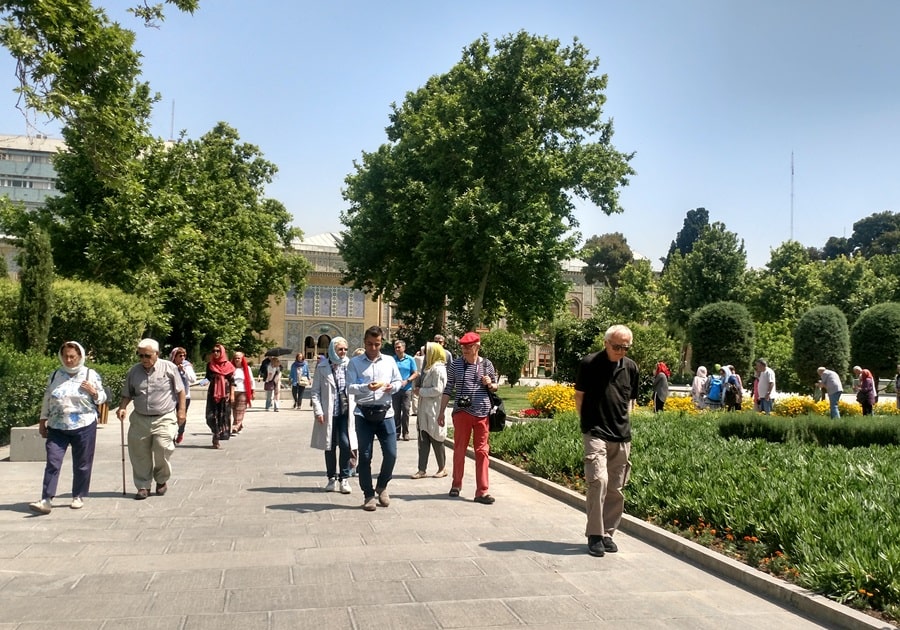
By following these guidelines, travelers can enjoy the enchanting experience of visiting historical sites, admiring stunning architecture, and partaking in the lively atmosphere of major cities across this ancient and captivating country.
Visa Requirements for Your Iran Trip
Understanding the visa requirements is crucial to ensure a smooth journey to Iran. Most travelers will need to secure a visa before entering Iran, with the type of visa depending on your nationality and travel purpose. Except for 42 nationalities who can travel to Iran visa free (Apr 2025), most nationalities including Europeans need to apply for a visa before arrival. For passport holders of the UK, the US, and Canada the visa process is a little more complex and they need to apply around 2 months before their trip. Typically, an Iranian tourist visa is valid for 30 days, but extensions are possible.
It’s essential to check that your passport is valid for at least six months beyond your planned departure date from Iran. While many nationalities are eligible for visas on arrival, it’s wise to apply in advance through embassies or authorized travel agencies to avoid potential delays.
Here’s a quick overview:
| Requirements | Details |
|---|---|
| Visa Validity | 30 days, with extension options |
| Passport Validity | At least 6 months beyond departure |
| Application | Embassies, authorized agencies , or Iran MFA e-visa website |
By following the steps outlined in our Iran Visa Guide, you’ll have everything you need to start your journey through Iran’s vibrant culture and stunning architecture!
Importance of Travel Insurance in Iran
Securing appropriate travel insurance is crucial when planning your visit. Travel insurance is mandatory for obtaining an Iranian visa, including visas on arrival. Most standard travel insurance companies exclude coverage for Iran, so you’ll need to opt for specialized providers like IATI Insurance or contact a local authorized travel agency like Compassimo in Iran for assistance.
Your insurance policy should cover the entire duration of your stay in Iran and include medical coverage. This is important due to potential differences in healthcare systems and the costs that may arise. Additionally, coverage for trip cancellations, lost or stolen luggage, and emergency repatriation is essential.
Cultural Etiquette and Local Customs in Iran
Embarking on a journey to Iran means immersing yourself in a rich tapestry of cultural norms and local customs that offers a fascinating contrast to Western norms. One of the most remarkable aspects of traveling through Iran is experiencing the legendary hospitality and friendliness of Iranian people. Visitors often find themselves overwhelmed by the genuine warmth and welcome they receive from locals, who are eager to share the beauty of their country and culture.
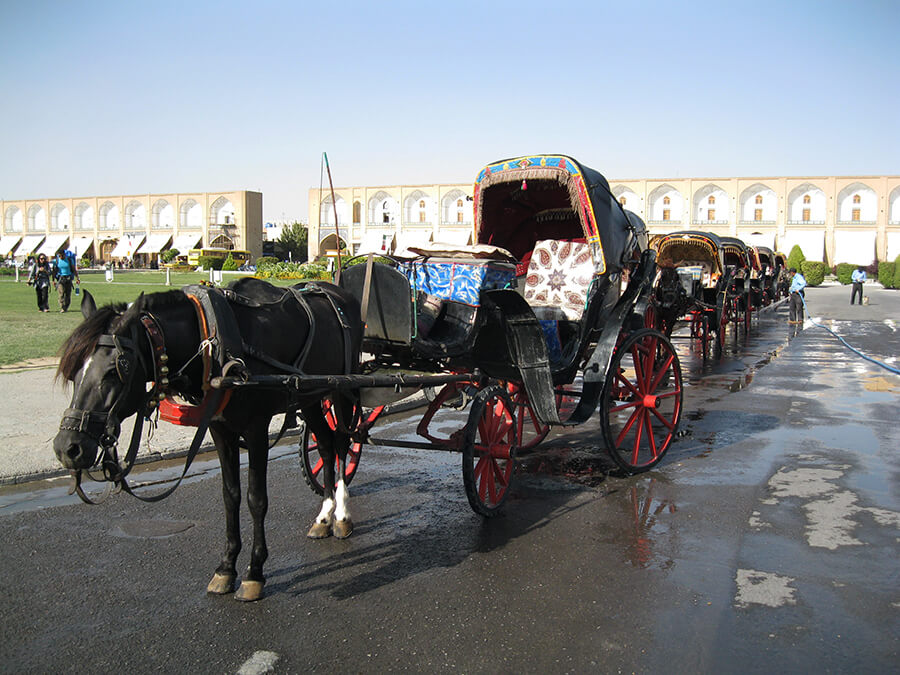
From the ornate historical sites to the bustling bazaars, Iran’s vibrant culture is everywhere. It’s crucial to approach these cultural experiences with an open heart and mind, as this openness can lead to profound and meaningful interactions. Whether you’re participating in the intricate social practice of Ta’arof, a form of politeness deeply embedded in Persian culture, or dressing to honor local customs, being culturally aware not only shows your respect but also enriches your travel experience.
Here’s a guide to help you navigate the cultural etiquette and local customs during your trip:
Greetings and Social Interaction
In Iran, greetings are an important part of daily life and reflect deep respect and friendliness. A typical greeting often begins with a warm smile, followed by a handshake between members of the same gender. Among friends and family, it’s common to exchange kisses on the cheeks — usually two or three light touches — but this is generally reserved for close acquaintances, not strangers. When greeting someone of the opposite gender, it’s safest to wait and see if they initiate a handshake; if not, a simple nod, a smile, or placing your right hand over your heart is a polite and respectful way to greet without physical contact.
Titles and polite forms of address are highly valued in Iranian culture. In formal situations, it’s customary to use “Agha” (Mr.) or “Khanom” (Ms.) before a person’s first or last name as a sign of respect. In highly formal situations, Iranians may also inquire about your health and family as part of the greeting, even if you’ve just met — this isn’t considered intrusive but rather a gesture of genuine kindness.
As a tourist, being mindful of body language is important. Standing too close, touching unnecessarily, or being overly casual in first meetings can feel inappropriate. Always err on the side of formality at first — Iranians are wonderfully warm and will naturally show you when it’s time to relax the formality. A little patience and attentiveness to local customs go a long way toward making heartfelt connections.
Dress Codes to Follow When Travel to Iran
In Iran, understanding and adhering to the dress code is essential for anyone keen on experiencing the country fully and respectfully.
For women, the law requires wearing a hijab (headscarf) from the moment they enter Iranian territory, regardless of whether it is in an airport or a public space. The rest of the outfit should consist of loose-fitting clothes that cover the arms and legs. Long tunics or manteaus over pants are recommended to ensure modesty. While the traditional black chador is not obligatory except in certain religious settings, women might find wearing one useful when visiting mosques or holy shrines to comply with stricter dress codes. Embracing these practices not only aligns with Iranian regulatory norms but also shows respect for local traditions and religious sentiments, enriching the visitor’s experience.
For men, the dress code in Iran is somewhat less restrictive but still calls for attention to modesty. Men are expected to wear long pants in public, as shorts are generally considered inappropriate. It’s advisable to avoid wearing sleeveless shirts to uphold modesty. A standard outfit comprises long trousers and a shirt or T-shirt, which is both suitable for daily activities and respectful of cultural expectations.
Traveling to Iran and Understanding “Ta’arof”
Ta’arof is an interesting and sometimes confusing cultural practice that is a big part of how people in Iran interact socially. It involves a series of polite exchanges where offers and invitations are given with the understanding that they will be refused at first. This shows respect and humility from both sides. You’ll find this practice in many places, like markets, streets, and homes throughout Iran.
For example, imagine you’re buying a beautiful item in a busy bazaar. The shopkeeper might say, “Be my guest or take it, it’s free,” as if offering it as a gift. But this is ta’arof. It’s not really a free gift but a polite way of speaking. The social rule is that you should kindly refuse the offer at least once before buying it. Knowing this is important because accepting such offers right away could feel awkward or confusing, as it goes against the unspoken rules of this politeness ritual.
For visitors, it’s key to recognize when an offer is just a polite gesture rather than a real invitation. Engaging in ta’arof can make your experience in Iran much richer, helping you connect better with locals and appreciate Iranian culture. At first, you might need to watch closely and practice a bit. But over time, you’ll become comfortable with this complex yet fascinating practice, adding an extra cultural layer to your trip.
Persian Hospitality in Iran
Iranian hospitality is nothing short of legendary, captivating travelers with warmth and generosity that is renowned worldwide. Visitors to Iran are often amazed by the deeply ingrained sense of hospitality, which many cite as one of the most memorable aspects of their trip.
As you venture through Iran’s bustling cities and explore its ancient heritage sites, you’ll commonly encounter locals eager to share their culture through gestures of kindness. It’s not uncommon for strangers to invite you into their homes, where the simple yet symbolic act of offering tea — typically served from a traditional samovar — represents the heart of Iranian hospitality. These moments are often enriched with the sharing of sweets, further embodying the open-heartedness of the people.
To fully appreciate and partake in these delightful exchanges, it’s important to observe and respect local customs. Formal titles should be used when addressing elders, and discussions on sensitive topics such as politics are best avoided in casual settings. You’ll also get acquainted with the practice of Ta’arof in dining situations, where hosts repeatedly offer more food to guests as a sign of respect and hospitality. Understanding and graciously navigating these customs can significantly enrich your travel experience, providing a deeper connection to the culture and the people.
Currency: Navigating Iran Money
The Iranian Rial (IRR) is the official currency, but many everyday transactions are conducted using the Toman, where 1 Toman equals 10 Rials, so mastering this conversion can be quite useful. For travelers heading to this beautiful country, it is advisable to bring Euros or US Dollars, as international credit and bank cards are not accepted due to existing sanctions.
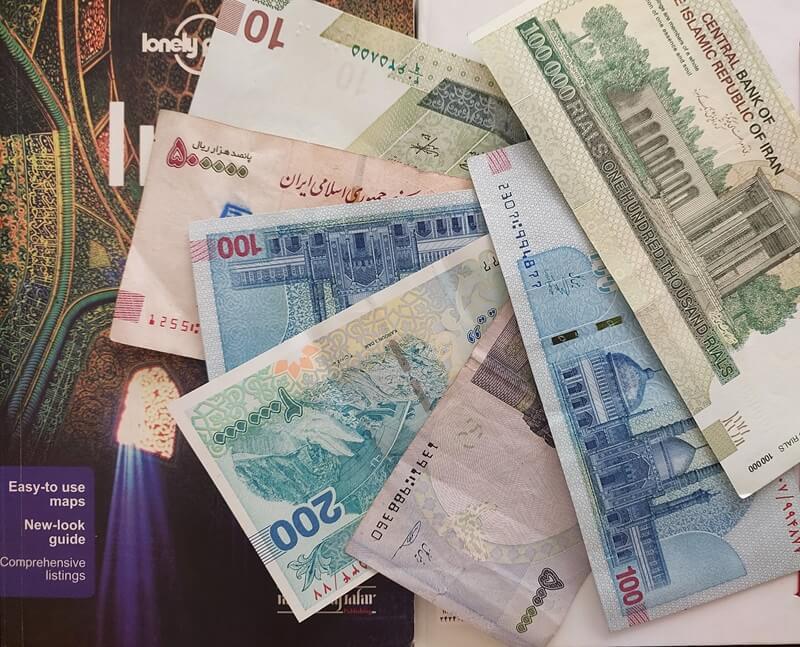
However, if you’re not keen on carrying a lot of cash, there are convenient solutions available. Some private companies in Iran offer tourist debit cards, which function like regular debit cards within the country. You can top them up with your desired amount and use them for transactions throughout Iran. At the end of your trip, you can even have the remaining balance transferred back to your bank account, providing a secure and convenient alternative to carrying large amounts of cash.
For exchanging foreign currency, both US Dollars and Euros are widely accepted, and it’s important to check current exchange rates on websites like bonbast.com due to fluctuations. Also, ensure that you declare any foreign currency at customs upon arrival to avoid potential issues when departing.
By following these guidelines, you can enjoy a seamless experience while soaking in Iran’s rich culture and heritage.
Local SIM Cards & Internet Access in Iran
Staying connected during your trip to Iran is essential for a smooth and enjoyable travel experience. While some international carriers technically offer roaming services in Iran, the costs are extremely high and not practical for most travelers. Instead, purchasing a local SIM card from major operators like Hamrahe Aval or Irancell is a much better and more affordable option.
Local SIM cards are easy to obtain upon arrival and typically cost around $5.00, offering reliable high-speed internet and nationwide coverage. This ensures you can stay in touch with family and friends, navigate with ease, and share your journey in real time. To make the process even easier, you can pre-order a tourist SIM card through Compassimo and pick it up when you arrive — allowing you to get connected immediately without any hassle.
While many hotels and some hostels offer Wi-Fi, coverage can be inconsistent, especially outside major cities. Having a local SIM with a good data package guarantees stable internet access wherever your travels take you. It’s also highly recommended to install a VPN on your device before your trip, as certain social media platforms (like Instagram and YouTube) and websites are restricted in Iran. However, popular apps like WhatsApp remain fully accessible and are widely used by both locals and visitors for messaging and calls.
Travel to Iran: Transportation
When exploring the beautiful landscapes and ancient cities of Iran, you’ll find a myriad of transportation options to suit your needs. Public transportation is prevalent and well-maintained in major cities, making it an ideal choice for visitors seeking convenience and affordability. For example, Tehran and Mashhad boast excellent metro systems, where travelers can use metro cards to enjoy discounts compared to purchasing single tickets. The Bus Rapid Transit (BRT) system in Tehran further complements the metro by offering an equally efficient mode of travel, accepting metro cards for added ease. Regular buses are also common in all the main cities throughout the country.
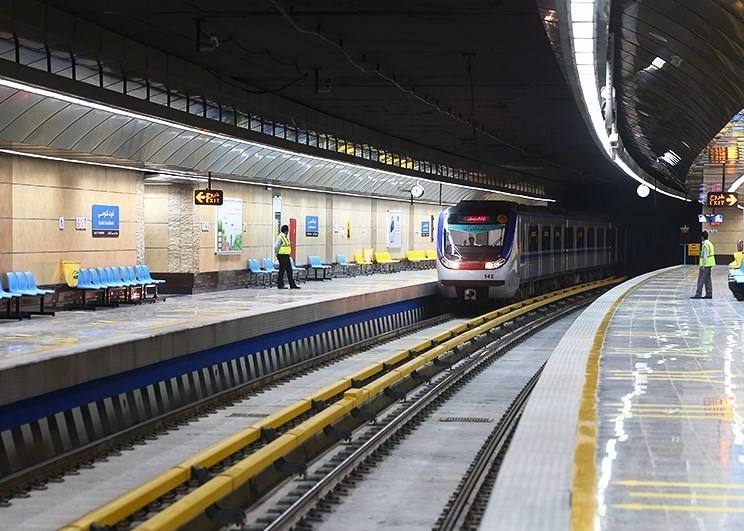
📷 Photo by Mohammad Ali Marizad, via Wikimedia Commons
Beyond city limits, Iran’s extensive bus network provides a reliable means of travel between cities. Travelers can purchase tickets a day or two in advance, or buy directly from bus stations when spontaneity strikes. For those in a hurry, domestic flights and trains also serve as a frequent and pocket-friendly alternative, depending on your route for commute. Taxis, shared taxis, and online taxi apps (Snapp and Tap30) also offer additional flexibility, perfectly supplementing the robust public transport infrastructure.
Where to Stay in Your Iran Trip?
Iran offers a wide range of accommodation options to suit every traveler’s needs and budget. In vibrant cities like Tehran, Isfahan, Shiraz, Mashhad, Yazd, and Kerman, you’ll find everything from luxurious five-star hotels and boutique stays to budget-friendly hostels and charming traditional guesthouses. For a truly unique and memorable experience, consider spending a night in a historic caravanserai — ancient roadside inns that have been beautifully restored into atmospheric lodgings, capturing the spirit of Persian hospitality.
In smaller cities and rural areas, options like 2- to 3-star hotels, traditional houses, and eco-lodges offer comfortable and often delightfully authentic stays. Traditional houses — often built around courtyards with beautiful Persian architecture — provide an intimate glimpse into local life, while eco-lodges are ideal for travelers seeking nature-focused experiences in villages, deserts, and mountainous regions.
To ensure a safe, comfortable stay, it is recommended to book accommodations certified by the Iranian Ministry of Tourism. This certification guarantees that the property meets local standards of safety, hygiene, and service quality. Additionally, booking in advance — particularly during peak travel seasons during spring and autumn — can help you secure the best options and avoid last-minute inconveniences.
Whether you’re seeking luxury, cultural immersion, or an off-the-beaten-path retreat, Iran’s diverse accommodation choices ensure that every traveler can find a perfect place to call home during their journey.
Best Places to Visit in Iran
Iran, a land of profound history and vibrant culture, offers a plethora of breathtaking sites and attractions that captivate the hearts of travelers. From architectural masterpieces and ancient ruins to bustling urban centers and serene natural landscapes, Iran promises a unique and enriching travel experience. Whether you’re an adventurer exploring rugged terrains or a history enthusiast fascinated by ancient civilizations, Iran has something for everyone. Let’s dive into some of the must-visit spots throughout this rich and diverse country.
Major Iranian Cities to Explore in Your Iran Tour
Iran’s major cities are not only gateways to its historical and cultural wonders but also vibrant urban centers bustling with life and activity. Tehran, the capital city, serves as an exciting starting point for any Iranian journey. It boasts an array of museums like the National Museum of Iran and the exquisite Golestan Palace. Navigating Tehran is convenient, with its extensive metro and taxi systems.
Isfahan, often described as “half the world” in Persian poetry, captivates visitors with its magnificent Safavid architecture. At its heart lies the breathtaking Naqsh-e Jahan Square, surrounded by grand mosques, royal palaces, and bustling bazaars. The city’s historic bridges, like Si-o-se-pol and Khaju, along with its serene gardens, invite travelers to slow down and soak in the atmosphere.
Shiraz is celebrated as the city of poets, gardens, and wine. Home to the tombs of literary giants Hafez and Saadi, Shiraz enchants visitors with its romantic gardens like Eram Garden, and architectural masterpieces like the colorful Nasir al-Mulk Mosque. It also serves as a base for exploring nearby wonders like Persepolis and Pasargadae.
Tabriz, located in Iran’s northwest, boasts a rich Azerbaijani culture and is famed for its impressive Historic Bazaar Complex, a UNESCO World Heritage Site. The city offers a cooler climate, delicious local cuisine, and easy access to scenic destinations like Kandovan village with its unique cave houses.
Yazd, known for its winding alleyways, mud-brick architecture, and ancient Zoroastrian heritage, charms travelers with its peaceful, timeless feel. It’s also an excellent choice for budget-conscious visitors, offering cozy traditional guesthouses nestled within the old city.
Kerman, a gateway to the vast Lut Desert, rewards adventurous travelers with stunning attractions like the Ganjali Khan Complex and nearby Bam Castle. The city’s laid-back vibe and access to breathtaking desert landscapes make it a unique destination for those looking to explore Iran’s natural beauty.
Mashhad, Iran’s second-largest city, is a major pilgrimage site, home to the magnificent Imam Reza Shrine, one of the holiest sites in the Shia Islamic world. Beyond its religious significance, Mashhad offers lively bazaars, parks, and modern amenities that cater to all types of visitors.
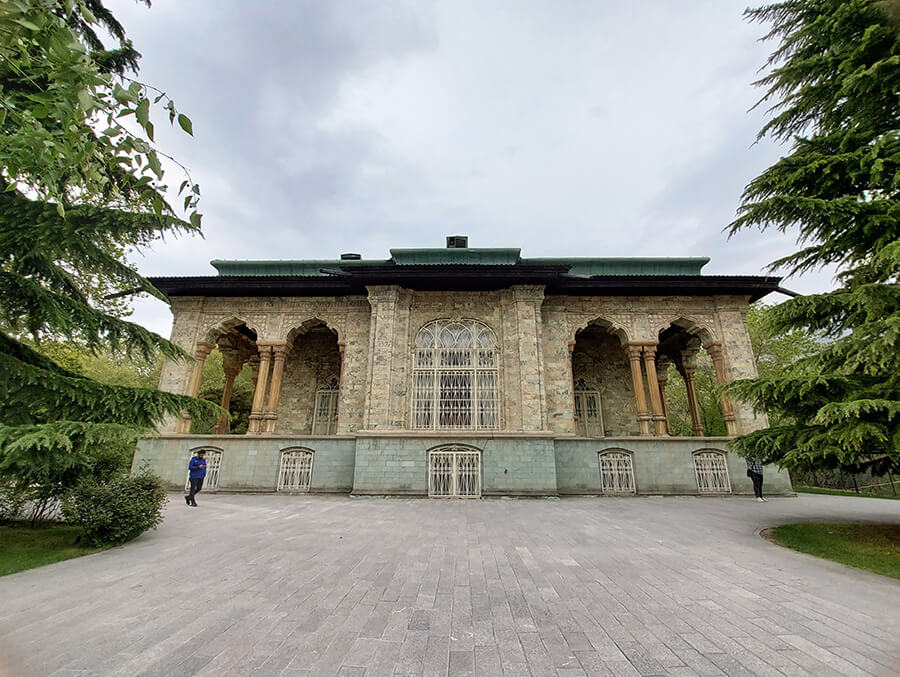
From Tehran’s urban buzz to the poetic charm of Shiraz, the cool culture of Tabriz, and the desert adventures of Kerman, Iran’s major cities each promise unforgettable experiences, making them essential stops on any journey through this fascinating country.
Historical Sites in Iran
With a history that stretches back over thousands of years, Iran stands as one of the world’s most historically rich countries. Its story begins with the ancient Medes, the first Iranian dynasty known to have established a unified state in the 7th century BCE. Over time, Iran has seen the rise and fall of powerful empires — including the Achaemenids, Parthians, Sasanians, and a succession of Islamic dynasties — each leaving behind a distinctive cultural and architectural legacy. This layered history makes Iran a land of extraordinary ancient and historical sites, each offering visitors something uniquely profound.
One of the crown jewels is Persepolis (locally known as Takht-e Jamshid), the ceremonial capital of the Achaemenid Empire. Its towering columns, intricate bas-reliefs, and monumental gateways continue to awe visitors, serving as an enduring symbol of Persia’s ancient grandeur. Just walking among the ruins, you can vividly imagine the glory of a civilization that once ruled much of the known world.
In central Iran, Isfahan showcases the splendor of the Safavid dynasty through its magnificent architecture. Naqsh-e Jahan Square, a UNESCO World Heritage Site, is the heart of the city’s historic beauty, surrounded by iconic landmarks like the Shah Mosque, the Ali Qapu Palace, and bustling bazaars that blend daily life with historical magnificence.
Moving northward, Tabriz invites travelers to explore the Tabriz Historic Bazaar Complex, another UNESCO-listed marvel. As one of the oldest and largest covered bazaars in the world, it offers a fascinating glimpse into Iran’s vibrant commercial past and the Silk Road trade routes that once connected East and West.
Every historical site in Iran, whether it’s the ancient fire temples of Yazd, the Sasanian palaces of Firuzabad, or the grand religious complexes of Mashhad, tells a different chapter of the nation’s epic story. Exploring these sites isn’t just about seeing ruins or old buildings — it’s about walking through the footsteps of empires, dynasties, and cultures that shaped one of the most influential civilizations in human history.
Natural Attractions of Iran
Thanks to its diverse climate and geographical location, Iran is famously known as a four-season country — meaning that you can experience spring, summer, autumn, and winter in different parts of the nation at the same time. This remarkable climate diversity gifts Iran with an extraordinary variety of natural landscapes, offering endless opportunities for nature lovers, adventure seekers, and outdoor enthusiasts.
In the heart of the country lie Iran’s vast deserts, such as the Dasht-e Kavir (Great Salt Desert) and the Dasht-e Lut, a UNESCO World Heritage site renowned for its surreal, otherworldly formations and record-setting heat. These desert expanses provide mesmerizing vistas of sand dunes, salt flats, and rocky outcrops, making them ideal for activities like stargazing, camel trekking, and off-road SUV adventures across shifting sands.
Moving northward, the landscape transforms dramatically. The Alborz and Zagros mountain ranges carve through the country, offering majestic peaks, lush valleys, and picturesque villages. Mount Damavand, the tallest volcano in Asia, towers over the landscape and attracts climbers and trekkers from around the world. In winter, several regions, including Dizin and Shemshak, turn into popular skiing destinations.
Along the Caspian Sea coast, you’ll find dense forests, rice paddies, and temperate beaches perfect for relaxed retreats and eco-tourism adventures. Meanwhile, to the south, the Persian Gulf and the Oman Sea beckon with warm waters, coral islands, and vibrant coastal cities like Bandar Abbas and Qeshm Island, where unique geological features like the Valley of Stars and Hara mangrove forests await discovery.
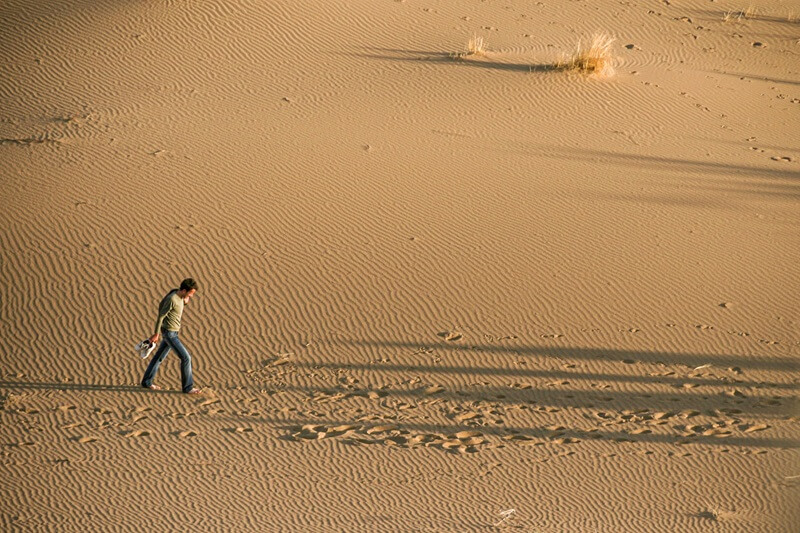
📷 Photo by Mohammad Shahhosseini, via Unsplash
From lush green forests and snow-capped mountains to sun-scorched deserts and pristine southern shores, Iran’s natural diversity offers travelers an incredible chance to experience a wide range of outdoor environments — often within a single trip. Wherever you go, Iran’s landscapes promise unforgettable moments and awe-inspiring beauty.
Tracing the Silk Road in Your Iran Tour
Iran’s pivotal role in the Silk Road — the legendary network of trade routes connecting East and West — was instrumental in shaping not only its own destiny but also the cultural and economic landscapes of entire civilizations. Positioned at the very heart of these routes, Iran served as a vital bridge for the exchange of goods, ideas, art, technology, and belief systems between Asia, Europe, and Africa. Caravans laden with silk, spices, precious stones, ceramics, and manuscripts passed through its cities, fueling prosperity and fostering dynamic cultural interactions.
The legacy of the Silk Road is visible across the country, from the architecture of bustling bazaars and caravanserais to the flavors of regional cuisines and the traditions that continue to thrive in local crafts and music. Cities such as Tabriz, Yazd, and Kerman flourished as major trade hubs, where merchants, travelers, and scholars converged, blending diverse influences into a unique Persian identity.
Iran UNESCO World Heritage Sites
Iran proudly boasts 27 UNESCO World Heritage Sites — 25 cultural and 2 natural — (April 2025) making it one of the countries with the richest collections of globally recognized landmarks. These sites offer profound insights into Iran’s architectural mastery, cultural evolution, and natural splendor, reflecting thousands of years of civilization and artistic achievement. From ancient ruins and grand palaces to intricate gardens and sacred sites, each location tells a unique story about the peoples and empires that shaped Iran’s remarkable history.
Highlights include the Bam Citadel (Arg-e Bam), a monumental desert fortress that, despite damage from the 2003 earthquake, still symbolizes the resilience of Persian architectural traditions. The lush Eram Garden in Shiraz captures the soul of the Persian garden ideal with its serene beauty and harmonious layout. Meanwhile, Golestan Palace in Tehran dazzles with its opulent Qajar-era architecture, intricate tilework, and royal elegance. Together, these UNESCO sites weave a vivid tapestry of Iran’s cultural depth, inviting visitors to step into the living history of an ancient yet ever-evolving land.
Experiencing Iran’s Culinary Delights
Delving into Iran’s culinary scene is a journey woven with tradition, rich aromas, and time-honored techniques. Persian cuisine, renowned for its delicate balance of flavors and meticulous preparation, features beloved dishes such as Chelo Kebab, Zereshk Polo (barberry rice), Baghali Polo (dill and fava bean rice), Ghormeh Sabzi (herb stew), and Fesenjan (walnut and pomegranate stew). Central to many recipes is saffron, the prized spice that imparts golden hues and a distinct fragrance to stews, rice dishes, and desserts, symbolizing the luxurious essence of Persian cooking.
Dining in Iran is as much about the experience as it is about the food itself. Meals are often shared in a communal setting, reflecting the deep-rooted Iranian hospitality that warmly welcomes guests as part of the family. To savor authentic flavors, visitors are encouraged to explore local eateries and traditional teahouses, where regional dishes are served with genuine care at very reasonable prices, offering a true taste of Iran’s diverse culinary heritage.
For those who love sampling food on the go, Iran’s bustling streets provide a wealth of quick and delicious options. From freshly made falafel sandwiches to traditional pastries and sweets, street food culture adds an extra layer of vibrancy to the culinary adventure. Exploring Iran through its flavors promises a warm, enriching, and unforgettable experience.
Understanding Persian Tea Culture
Persian tea (Chai) is far more than just a beverage in Iran — it is a deeply rooted part of daily life and a symbol of hospitality. Grown mainly in the lush northern provinces near the Caspian Sea, Iran’s high-quality black tea is traditionally served without milk, often accompanied by sweets like crystallized sugar (nabat), delicate cookies, or dried berries, enhancing the warmth of the social experience.
Tea plays a central role in Iranian hospitality, with offering a cup of tea being one of the most cherished ways to welcome guests and spark conversations. Beyond black tea, traditional herbal infusions known as Dam Noush are widely enjoyed for their soothing and health-boosting properties, reflecting the natural approach embedded in Persian lifestyle practices. While tea remains the heart of Iran’s hot beverage culture, coffee is steadily gaining popularity in urban areas, especially among younger generations, blending new tastes with traditional rituals.
Exploring Persian tea culture offers a delightful window into Iranian daily life, where every cup shared is a bridge of warmth, connection, and tradition that transcends generations.
Travel to Iran: Shopping Tips
Iran’s bazaars and marketplaces offer a vibrant shopping experience, where centuries of craftsmanship and tradition come to life. From spices and jewelry to textiles and household items, the variety is endless and deeply tied to the country’s cultural heritage. In Isfahan’s bustling bazaar, located around the magnificent Naqsh-e Jahan Square, artisans proudly display intricate inlaid wooden crafts, miniature paintings, and handwoven fabrics — perfect souvenirs that capture the spirit of Persia. Meanwhile, the Tabriz Historic Bazaar Complex, a UNESCO World Heritage Site and one of the oldest markets in the Middle East, enchants visitors with its labyrinthine alleys brimming with handmade carpets, local produce, and traditional goods.
Shopping Tips in Iran:
- Bargaining is part of the experience: Friendly haggling is expected and can often lead to better prices.
- Venture beyond tourist hotspots: Local markets usually offer more authentic products and fairer pricing.
- Prioritize handicrafts: Iranian handwoven carpets, miniatures, pottery, and embroideries make meaningful and lasting souvenirs.
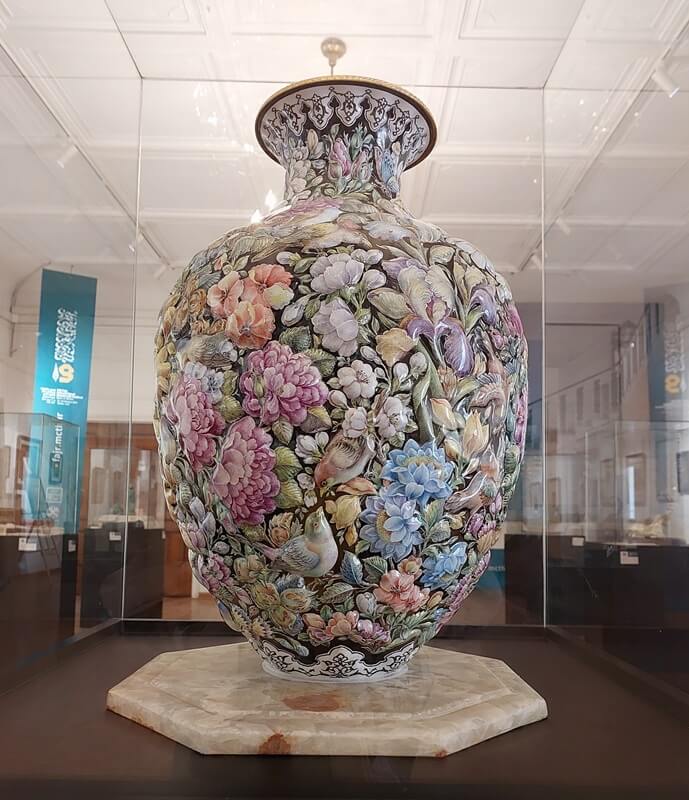
Whether you are meandering through a historic bazaar or browsing a modern shopping center, Iran promises an enchanting shopping journey filled with artistry, tradition, and unforgettable finds.
Iranian Festivals and Events
Iran’s calendar is filled with vibrant festivals and cultural events that offer travelers an immersive glimpse into its rich traditions and lively social customs. Nowruz, the Persian New Year and the country’s most celebrated holiday, marks the arrival of spring with joyful gatherings, colorful decorations, and widespread festivities across Iran.
When planning your trip, it’s important to keep in mind that major religious observances such as Ramadan and Muharram may lead to the temporary closure of businesses, restaurants, and tourist sites. Being aware of these periods helps ensure a smoother travel experience and allows you to respectfully observe local customs.
Festival and Event Travel Tips:
- Plan Ahead: Check festival and holiday dates before your trip to avoid disruptions.
- Expect Limited Services: Anticipate closures during major religious events.
- Engage with Locals: Festivals are an excellent opportunity to connect with the community and experience authentic Iranian culture.
Exploring Iran during festival seasons can add a beautiful new dimension to your journey, combining stunning sights with unforgettable local interactions.
Can Americans Travel to Iran?
Yes, Americans can travel to Iran, but it requires careful planning and compliance with specific regulations. Independent travel is not permitted for U.S. passport holders; instead, Americans must either join an authorized group tour or have a private itinerary arranged through a licensed Iranian travel agency, accompanied at all times by an official Iranian guide.
Applying for an Iranian visa as a U.S. citizen demands extra preparation. The visa-on-arrival option is not available for American travelers, so you must apply well in advance — ideally at least 8 to 10 weeks before your intended departure. Since you must apply through and authorized travel agency, they will assist you during your visa application process.
Keep in mind that hiring a guide adds additional costs to your trip, as you are responsible for covering their accommodation, meals, and transportation throughout the journey. While these requirements may seem restrictive, having a knowledgeable local guide greatly enhances the experience, offering deeper cultural insights and facilitating smoother interactions during your stay.
With the right preparation and an open mind, traveling to Iran as an American can be an incredibly rewarding and eye-opening adventure.
Essential Dos and Don’ts When Traveling to Iran
Exploring Iran offers a rich journey through Persian culture, history, and vibrant cities. However, understanding and respecting local customs is essential for a smooth, respectful experience.
Dos:
- Dress Modestly:
Women must wear a headscarf and loose clothing that covers the arms and legs. Men should avoid wearing shorts or sleeveless shirts in public spaces. - Ask Permission for Photos:
Always seek permission before photographing people, particularly women, to respect personal privacy and cultural sensitivities. - Carry Passport Copies:
Hotels often hold onto your passport for registration purposes. Keep copies of your passport and Iranian visa with you at all times while traveling. - Bring Your Own Toilet Paper:
Public restrooms may not always provide toilet paper, so it’s wise to carry a small supply with you. - Respect Religious Sites:
When visiting mosques or religious sites, remember to remove your shoes before entering, and be mindful of local customs during prayers. - Be Mindful of Public Displays of Affection:
Public displays of affection are not culturally acceptable in Iran. Keep personal interactions discreet, especially in public places.
Don’ts:
- Avoid Political Discussions:
Stay clear of political conversations or debates to ensure a safe and pleasant visit. - No Photos of Official Buildings:
Avoid taking photos of military installations, government buildings, or police officers, as this can lead to serious misunderstandings. - Don’t Drink Alcohol in Public:
Alcohol is prohibited in Iran. Avoid public drinking and be mindful of restrictions regarding alcohol in private spaces.
Respecting these cultural norms not only ensures a smoother experience in your travel through Iran but also opens doors to deeper connections with the incredibly warm and hospitable Iranian people. By embracing these practices, you can fully enjoy the rich history and vibrant culture that Iran offers.
Final Thoughts: Preparing to Travel to Iran
A journey to Iran is more than a trip—it’s an invitation to experience a rich tapestry of history, culture, and heartfelt hospitality. With new visa policies making travel even more accessible in 2025, there’s never been a better time to explore this fascinating land.
Planning thoughtfully ensures you’ll uncover the true essence of Iran, from ancient cities to vibrant bazaars and hidden corners that few travelers reach. Traveling with experienced local experts can make this journey even more seamless and meaningful, offering deeper insights and memorable connections along the way.
Here’s a simple travel checklist we discussed in this Iran travel guide:
- Check visa requirements and travel insurance.
- Pack modest clothing and essential personal items.
- Arrange a local SIM card and install a VPN.
- Bring enough cash for your entire stay.
- Book trusted local tours to maximize your experience.
With the right preparation — and the right local support — your trip to Iran will be an unforgettable adventure filled with discovery, connection, and wonder.
Let’s Plan Your Iran Tour Together
FAQs about Travel to Iran
1. Do I need a visa to travel to Iran?
Yes, most travelers, need a visa to visit Iran. It’s recommended to apply in advance to be on the safe side.
2. Is it safe to travel to Iran?
Iran is generally safe for tourists, with a low crime rate. However, it’s important to respect local laws and customs to ensure a smooth and safe trip.
3. What is the best time to visit Iran?
The best time to visit Iran is during spring (March to May) or autumn (September to November) when the weather is mild and pleasant. However, traveling in low season has its own advantages too.
4. What should I wear in Iran?
Modesty is key in Iran. Women are required to wear a headscarf and loose clothing that covers the arms and legs. Men should avoid wearing shorts or sleeveless shirts in public.
5. Can I use my credit card in Iran?
International credit and debit cards do not work in Iran due to sanctions. It’s best to bring cash (Euros or USD) and exchange it for Iranian Rials upon arrival. You have also an option to use Iran Travel Debit Cards.
6. What is the local currency in Iran?
The local currency is the Iranian Rial (IRR); However in everyday use you will hear Tomans (10 Rials = 1 Toman). You can exchange foreign currency at banks or exchange offices throughout Iran.
7. Are there any restrictions on internet use in Iran?
Many social media platforms and websites are restricted in Iran. It’s advisable to install a VPN before traveling for unrestricted access.
8. What should I know about Iranian food?
Persian cuisine is flavorful and diverse, with dishes like Chelo Kebab, Ghormeh Sabzi, and Fesenjan. Street food, such as falafel, is also a popular option for quick meals.
9. What are some must-visit attractions in Iran?
Popular attractions include Persepolis, Naqsh-e Jahan Square in Isfahan, the historic bazaars in Tabriz and Kashan, and the desert landscapes of Yazd.


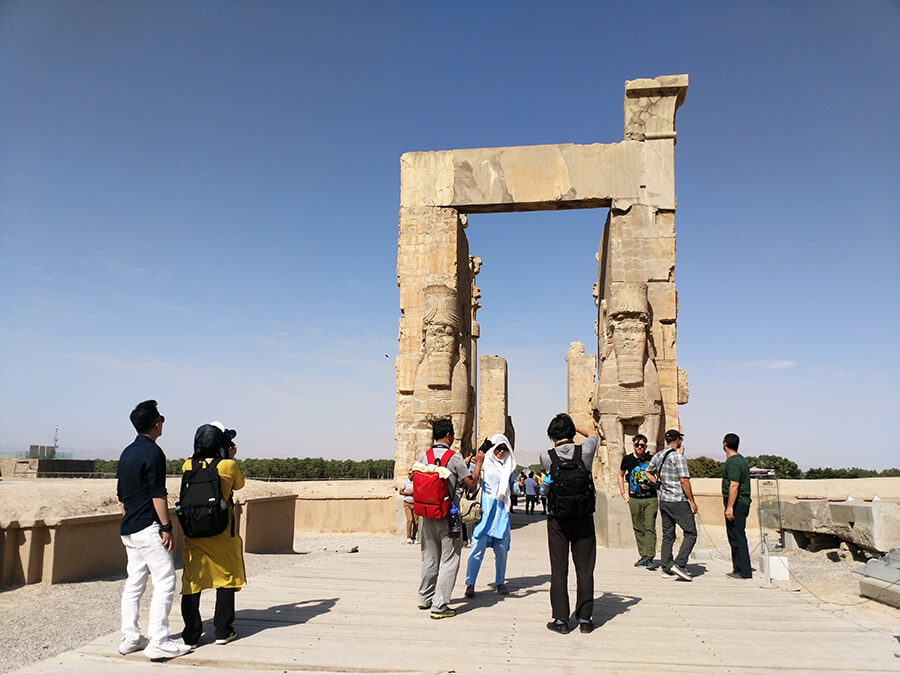
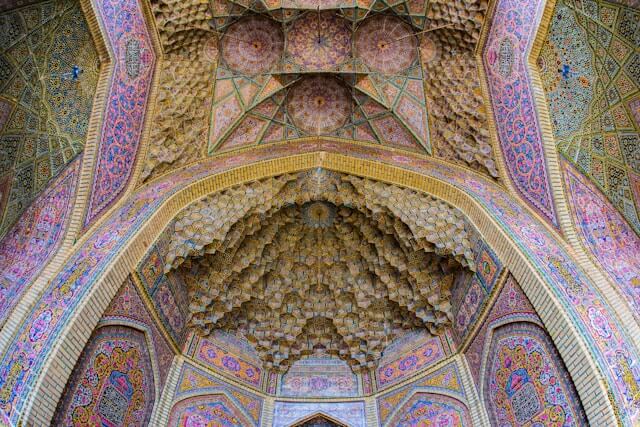
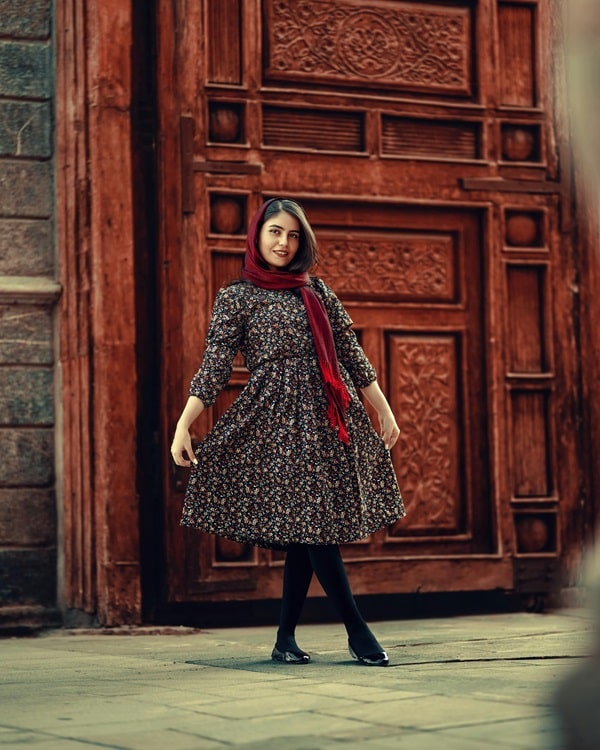
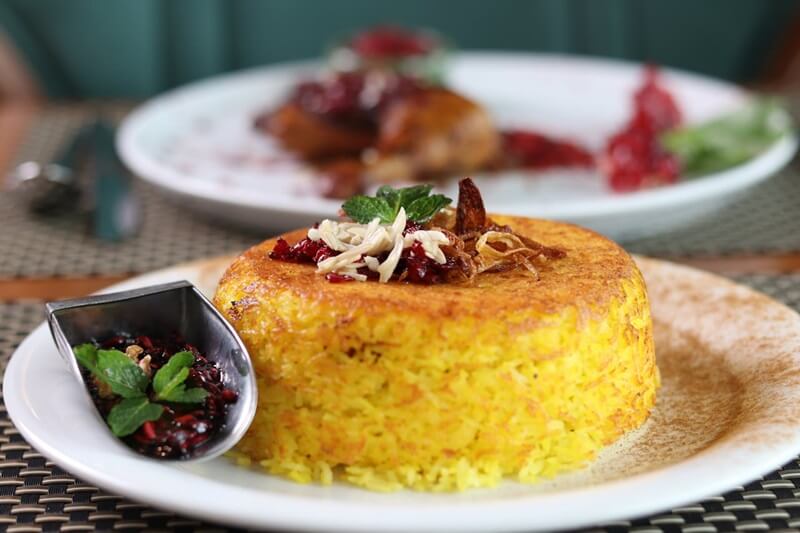
0 Comment